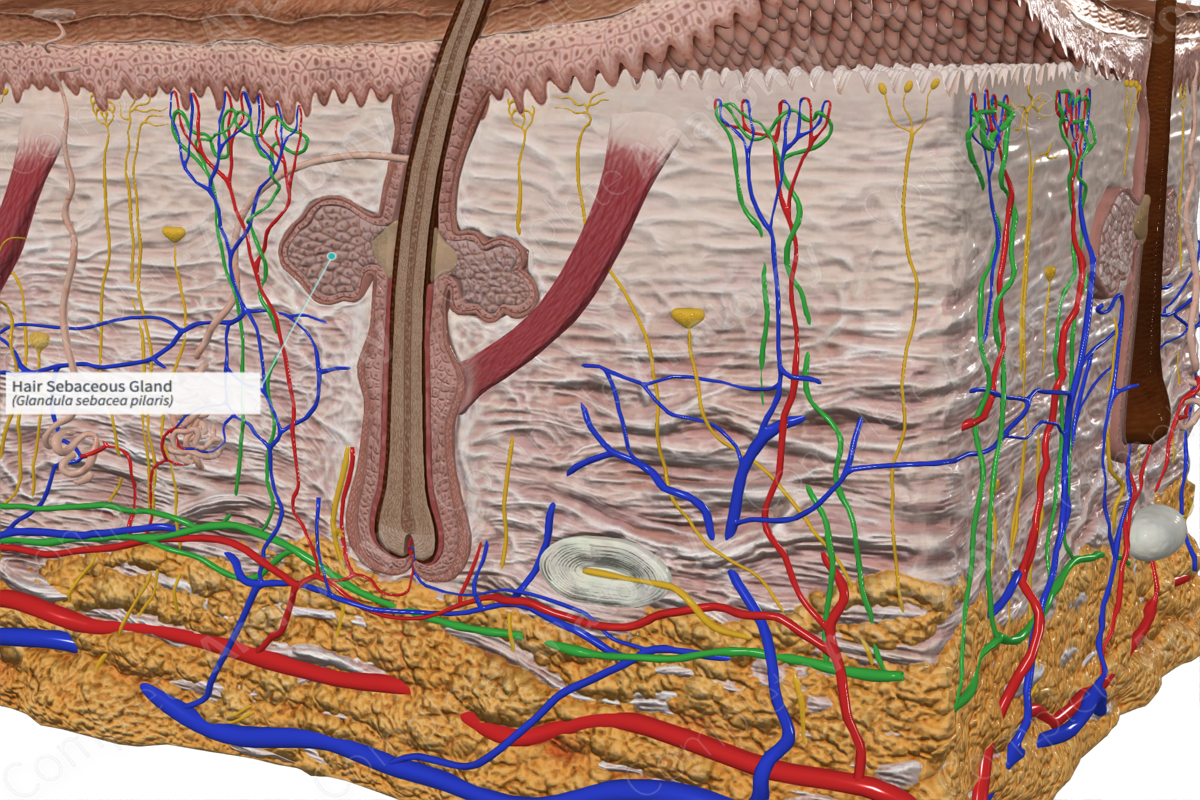
Quick Facts
A sebaceous gland is one of the holocrine glands of the skin that are located in the dermis and secrete sebum (Dorland, 2011).
Structure/Morphology
The sebaceous glands are small saccular structures that are found in the dermis. Sebaceous glands are usually associated with the hair follicle and arrector pili muscle, which together form the pilosebaceous unit. The gland has a short, wide duct that connects the gland to the isthmus of the hair follicle. The epithelium of the gland, which is arranged into acini, produces and accumulates sebum. Sebum drains into the pilary canal (the uppermost part of the hair follicle, located between the isthmus and the opening at the epidermis) and moves towards the surface of the epidermis (Standring, 2016).
The sebaceous gland sits at the angle between the arrector pili muscle and the hair follicle; thus, the muscle can assist the gland with the expulsion of its contents. However, sebaceous glands are not always associated with the hair follicle. Instead, their ducts open directly as the epidermal surface, for example, the lips, areolae of the breast, penis, clitoris, and labia minora (Standring, 2016).
Function
Sebum plays an important role in the epidermal barrier, and acts as a component of the skin’s immune system.
References
Dorland, W. (2011) Dorland's Illustrated Medical Dictionary. 32nd edn. Philadelphia, USA: Elsevier Saunders.
Standring, S. (2016) Gray's Anatomy: The Anatomical Basis of Clinical Practice. Gray's Anatomy Series: Elsevier Limited.
